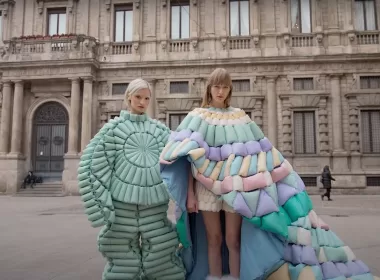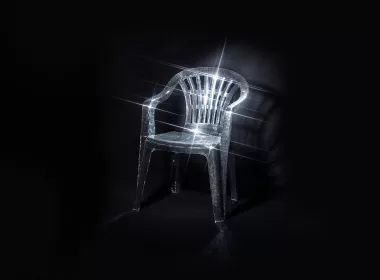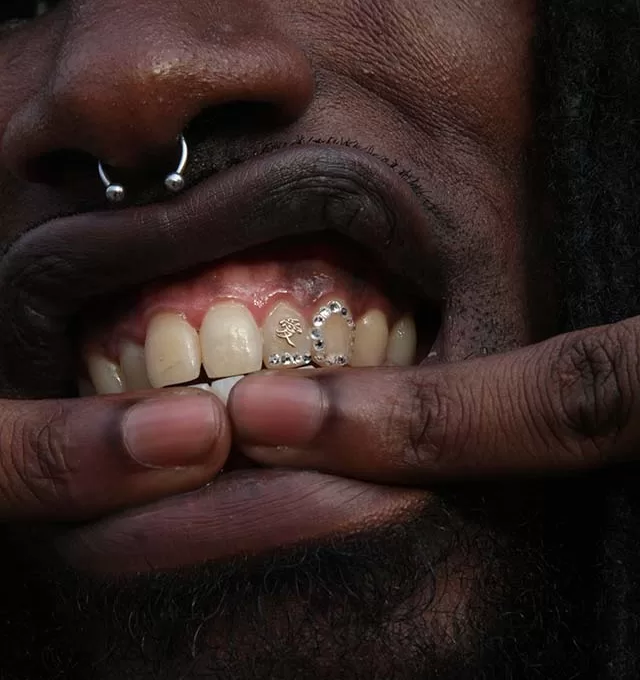Sometimes, there is a little something extra that makes celebrities’ smiles sparkle. It’s not the latest tooth whitening trend or veneers, it’s tooth gems: tiny jewelry that has been glued onto teeth. These charms come in various shapes, sizes, and colors, allowing people to personalize their smile to their liking. Most surprisingly these accessories aren’t being limited to younger generations. Participants of this fad include senior citizens. Yet, this isn’t a new trend invented by modern dentists or fashion designers, tooth embellishments were present in the ancient world.
The first people to embellish their teeth were the Mayans and the Aztecs, as we read in chronicles from the XVI century, and we can observe in skulls that are stored in the National Anthropology Museum of Mexico City. A variety of materials would be used to decorate teeth such as jade and pyrite. These gems were more than aesthetic choices, they held a deeper meaning, also considering their invaluable preciousness, immensely higher than gold. Jade was seen to hold mystical powers. It was seen as the stone of life. It was also associated with the sun and other symbols, but most importantly, it was seen as the most complete form of protection. Other parts of the world have bedazzled teeth as well. Tooth gems were present in Africa, the Middle East, and Asia. In ancient China, tooth gems were associated with yin and yang, meaning harmony and balance. They were thought to protect wearers from evil spirits and dental issues. Yet, overall there is a consensus that teeth embellishments helped demonstrate wealth and were beauty statements.
But why teeth? Until recently, with orthodontics improvements helping us, teeth would represent the main structure of one’s health and youth and one of our primary means of defense (to “fight tooth and nail”). Losing them would signify weakness. Placing magical gems would also metaphorically transfer the healing powers of the gems to the holder. Originally tooth gems would be applied through a rather tortuous procedure. Participants of this trend would get holes drilled into their enamel and dentine. After this, precious stones would be placed into the hollow area and secured in place with sealant. This sealant was very durable and has been found to be similar to cement, making original tooth gems more permanent than the present day ones.
Tooth gems began to fade from popularity as colonialism took over many countries. With colonialism there was a shift in beauty standards, many groups lost the wealth they originally had, and the spiritual beliefs once associated with tooth gems were lost as people shifted their religious views. This isn’t to say that teeth embellishing faded out all together, there were still groups that held on to their practices, but this fashion faded from the public consciousness. It wasn’t until the 90s that the public began to see tooth gems again. That was when pop stars and hip-hop artists began to wear them.
The artists that began wearing tooth gems wore them not only for aesthetics but to demonstrate how they were different from other performers. In hip hop it was a way to go against the perception of it being a lowly genre that stemmed from a background of city turmoil. By wearing tooth gems artists were demonstrating that they had reached a certain level of wealth many wanted, and were pushing back on the conceptions of beauty at the time. Though with the general public wanting to mimic the stars they saw this meaning was quickly lost.
Tooth gemmers now love this fashion accessory due to the creative freedom it lends them. Lucie Ato, a French tooth gem-technician and owner of Luz Studio, started decorating teeth six months ago due to this. “I love the idea of being able to personalize your body, your smile, according to your desires and moods,” she says. She also has a special take on tooth gemming believing that it provides a form of therapy. “Take, for example, if a person has a complex about their smile, this can help them to accept their smile, and then take on a form of healing,” she reasons. For her it is an art form — specifically body art, like tattoos, but not permanent. Tooth gems can last from a month to as long as a year according to Ato. Her process for applying tooth gems is the same as many other tooth gemmers. The charms added to teeth are Swarovski and Preciosa crystals, along with dental jewelry in silver or gold. To glue them on she uses a dental adhesive and a curing light to stick jewels onto her clients’ teeth.
There is a risk to tooth gems of course. On some occasions, people who claim to be tooth gemmers use glues that should not come in contact with teeth, such as super glue. This damages teeth with both the chemicals of the glue and the removal process. In Latin America, there has also been a resurgence of tooth embellishing since the 90s after the fall of many dictatorships. Wearers there also like to decorate their teeth to show off their wealth and power, as a defiance to the government that used to control them. However, many of the materials used in that area have been found to not always be the materials tooth gemmers and dentists claim they are. What is said to be gold or a precious stone may not be a pure substance, and many are manufactured in China. In fact, these bad materials have been linked to cancer, but this does not dissuade people from participating in this fashion.
For now tooth gems are very much part of the fashion world. Ato says, “the trend is exploding, demand is growing and more and more people are getting into the business.” However, she sees that “like all trends, it will decline and resurface years later, as the times change. Just as in the past, tooth gems were very fashionable in the 90s, the trend declined and resurfaced only recently.” Still with no current end in sight at home tooth gem kits have begun to be sold. Fashion brand FACULTY created a tooth gem starter kit, and tooth gem add ons (which are just lone crystals) as part of their accessories line. Perhaps the future of this trend will be for people to do it themselves, making it a more temporal experience. It seems that tooth gems evolve as we progress as a civilization, taking this trend alongside us.


















